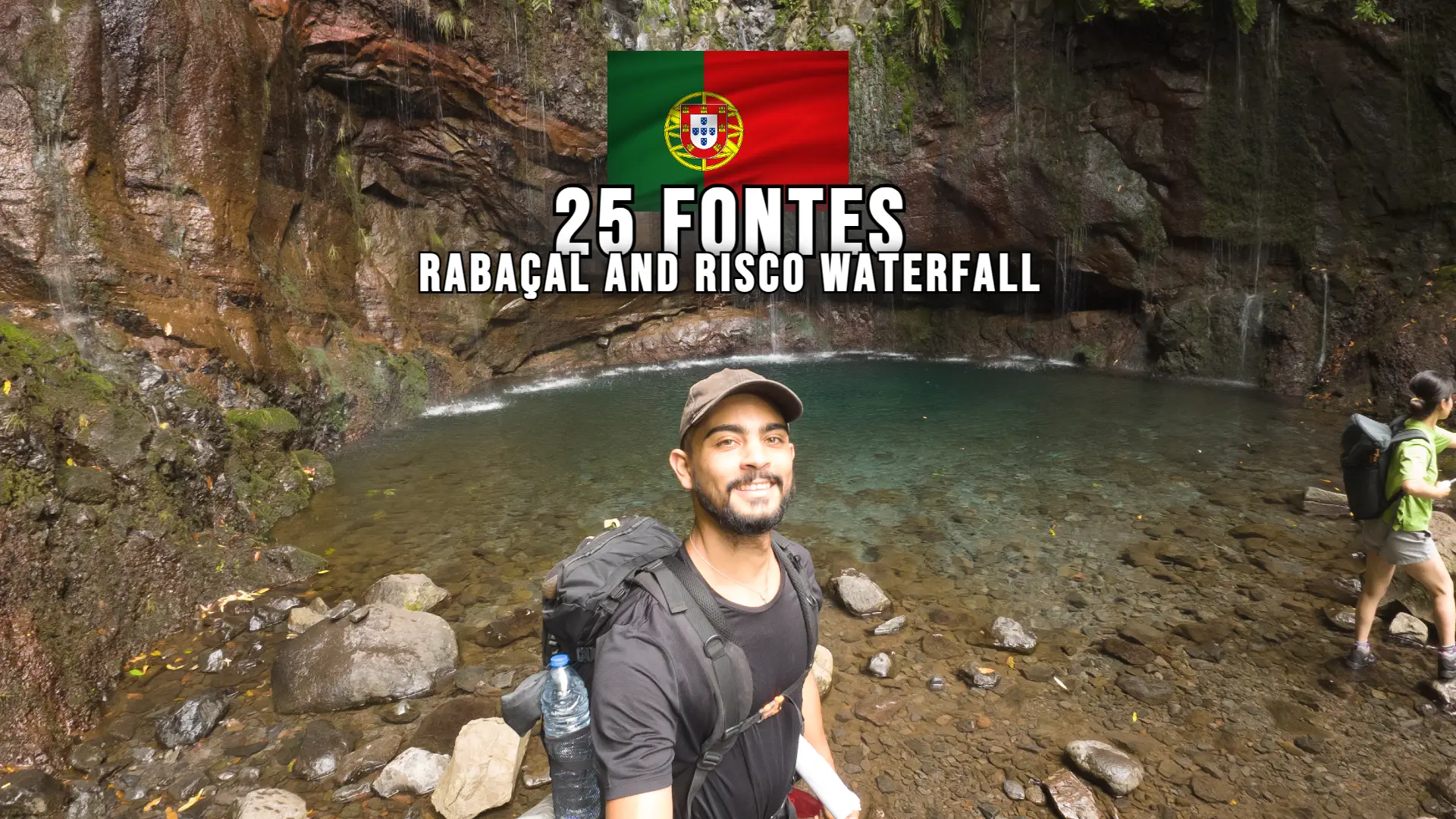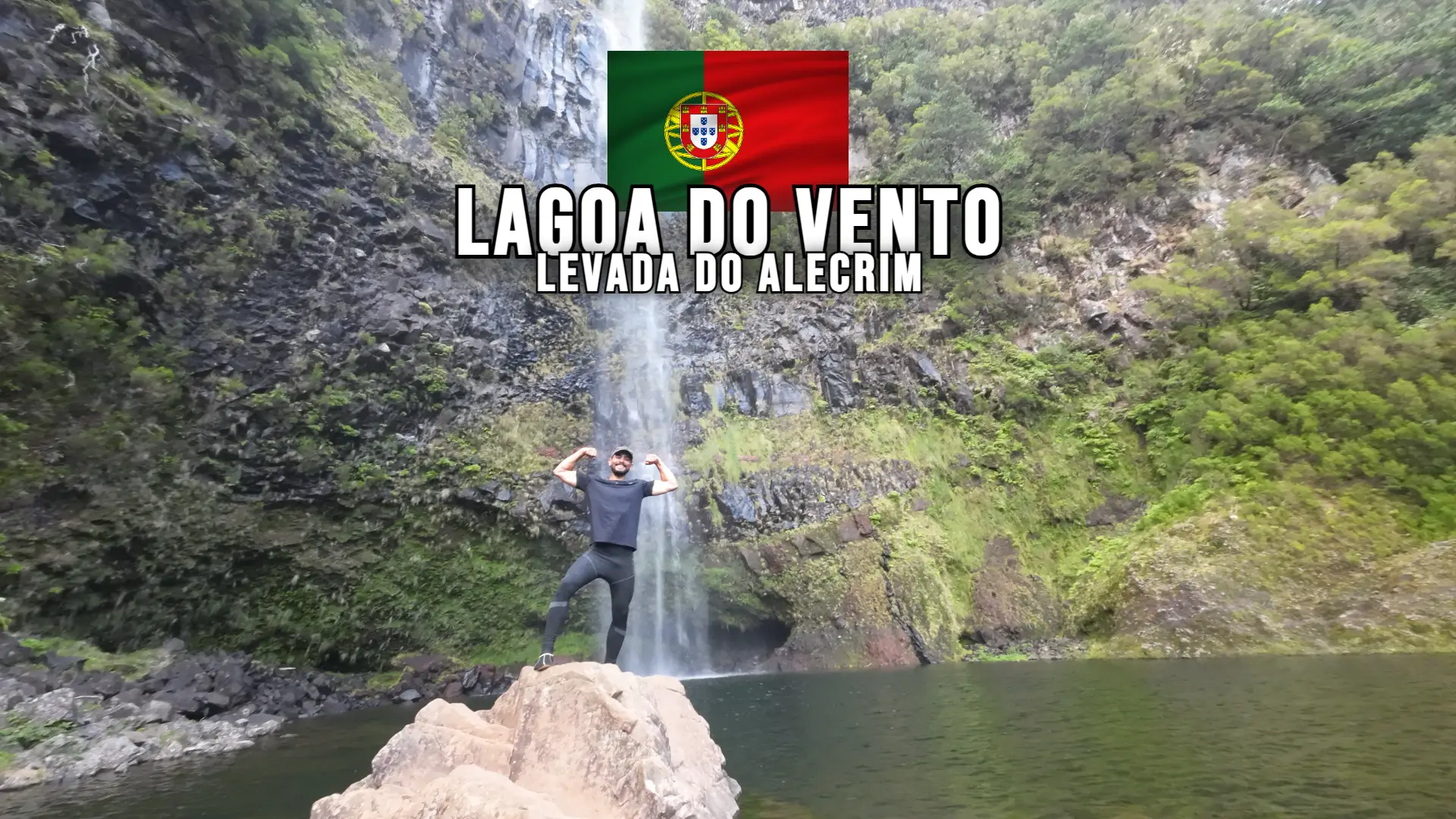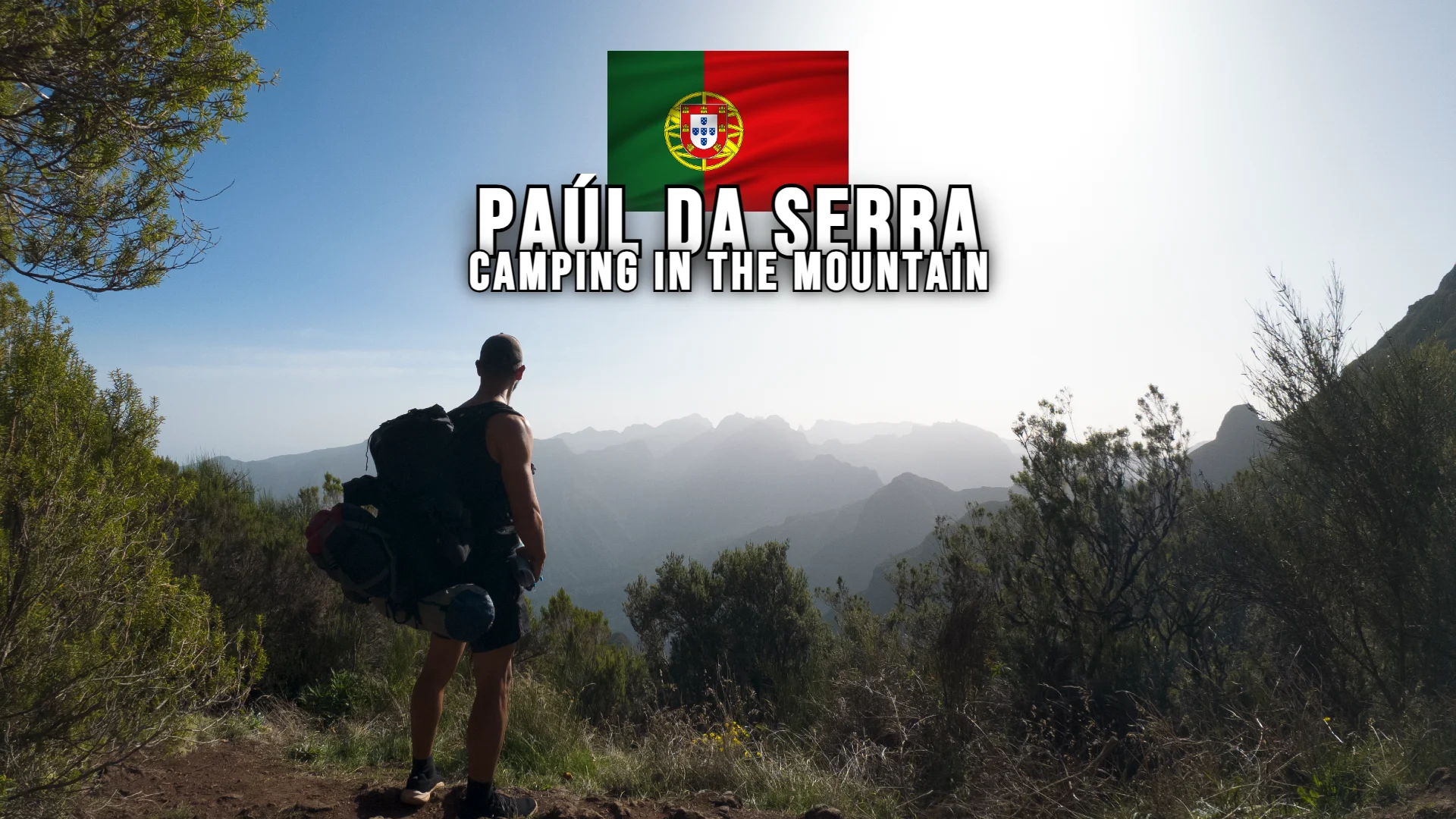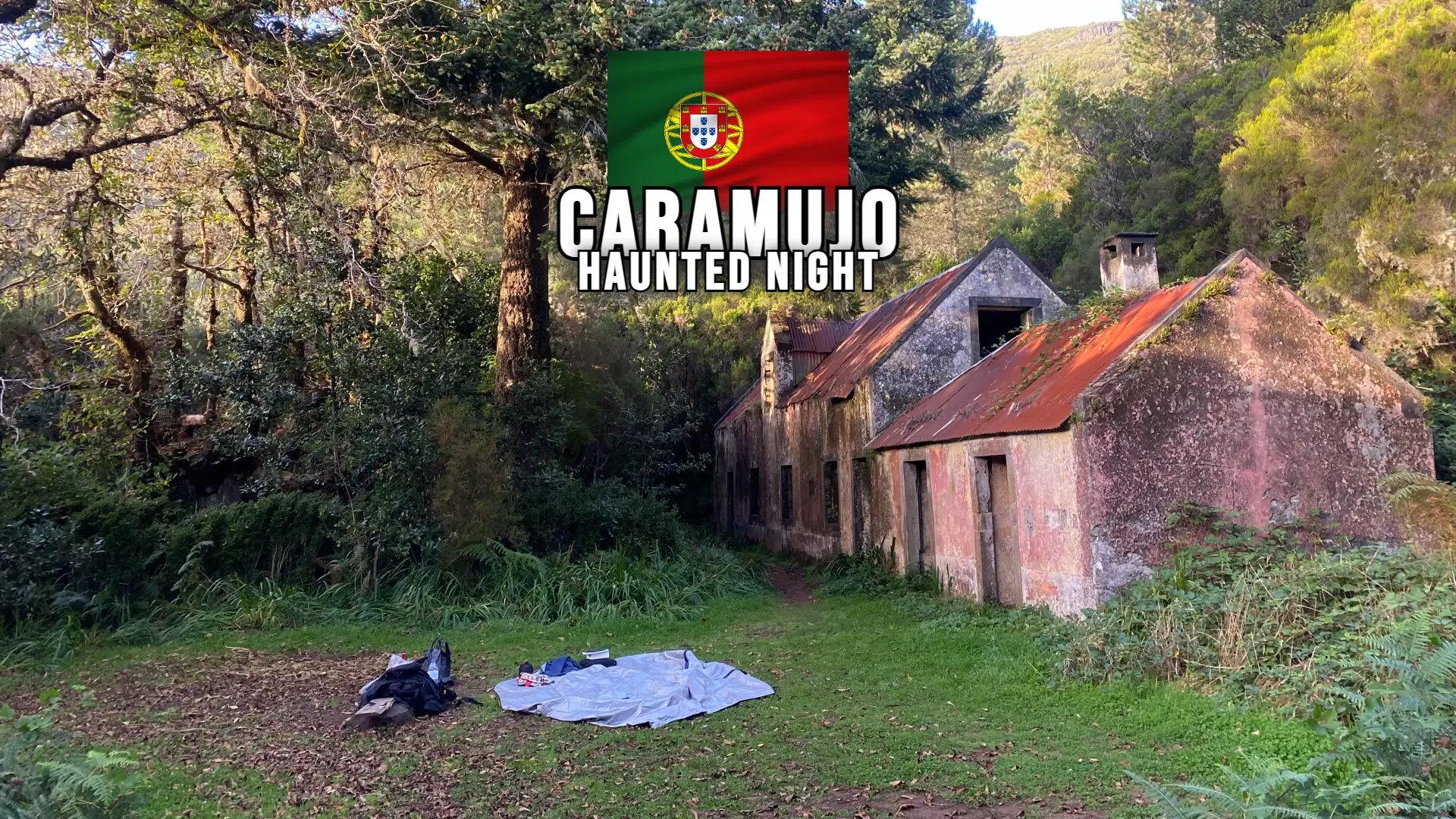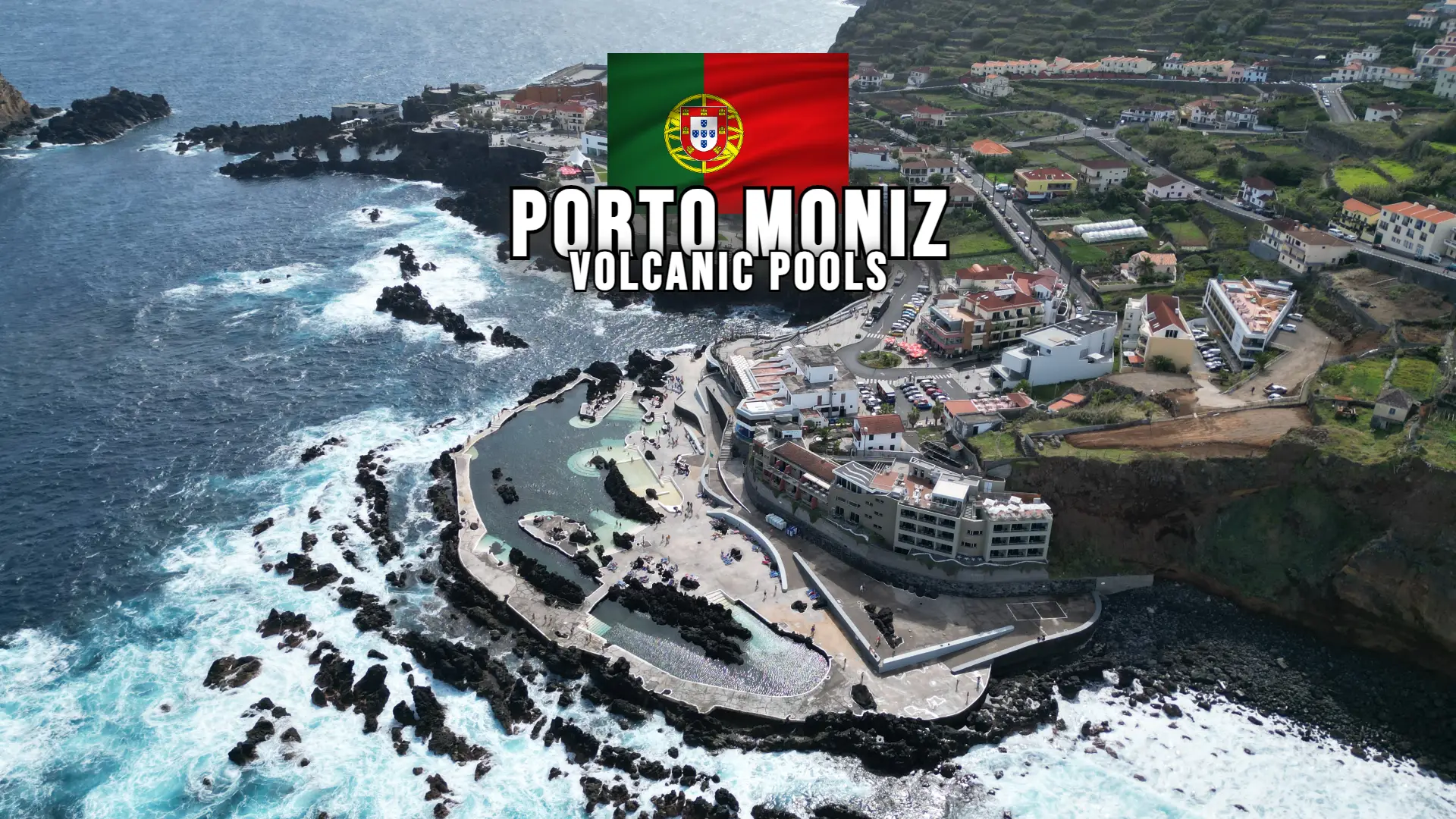Hey guys, what’s up? Welcome to another article here from your friend Gusta, continuing our “Degustación a la Española”. Today I will tell you about Andalusia and its amazing cities and I will also tell you a little about flamenco art, Andalusian horses, the ‘Pueblos Blancos’, and how about spending a night as a king or queen sleeping in the castle. You will see with me, people, how incredible the Spanish south is in contrast to the north that I showed you here in this article. From the historic streets of Cordoba to the stunning Alhambra in Granada, there’s so much to discover here. If you haven’t seen the last article, run to see it, it’s awesome!
See also this article: Best Rail and Car Routes Through Spain
Getting Around Andalusia: The cradle of Spain
Located in the south of the country, Andalusia is a region steeped in history and culture. It was here that the European continent met the African continent, and where the Moors ruled for seven centuries, leaving their mark on everything from the architecture to the food.
To explore all that Andalusia has to offer, you’ll need to get around. Luckily, there are plenty of options – from renting a car to taking the train. Check out our article on the Best Rail and Car Routes Through Spain for more information.
So there you have it, folks – a taste of the incredible region of Andalusia. Whether you’re a history buff, a sports fan, or just someone who loves to explore new places, there’s something here for everyone. So why not pack your bags and come see it for yourself?
The History of Andalusia
Andalusia is the cradle of Spain at its core, in the south of the country, right there where the European continent ends. This is an arid region that is just sensational and intriguing. Imagine your country being dominated for seven centuries by a completely different culture.
The dominion of the Moors
From the 8th to the 15th century, the Moors were there, personally, and left their mark. They left a legacy present in the culture, the language, the food, and the architecture of monuments such as the Real Alcázar in Seville, the Andalusian capital, the Mosque-Cathedral in Cordoba, and the Alhambra Palace in Granada. A trip to Andalusia, besides being a trip back in time, is understanding how a place with such strong, multifaceted traditions adapted quickly to modernization, but at the same time continues to be a never-ending mystery where we get in touch with the various layers of Spanish history.
Cordoba: A City of Contrasts
Just a short trip from Granada lies the city of Cordoba, a place of stark contrasts. Wander through the narrow streets of the old town, admiring the ancient mosque-cathedral and the stunning Roman bridge. Then head to the modern side of the city, where you’ll find sleek bars and restaurants serving up delicious local cuisine.
Starting from Madrid, the first stretch by fast train, the Renfe Ave Train to Cordoba which is almost 400km to the south and takes 1h50. Super nice, time literally flies by. Here’s the thing, before disembarking it is important that you need to know a few things:
- Who will arrive in a city that was founded by the Romans in the year 2006 of Christ
- Which has a bridge with 16 Arches built in the 1st century connecting the historic center to the field of Truth.
- In the 10th century it was considered the largest city in Europe and one of the most developed in the world. At that time they built the great Mosque of Cordoba, which was transformed into a Catholic Cathedral after the reconquest, and for all of this it is a World Heritage Site, right?
- One place to stay for at least one night is in the Juderia, because that is where the main attractions are.
Speaking of the Jewish Quarter, this region not only had Moorish rule, but a very strong Jewish legacy as well. The Sephardic Jews, in Hebrew ‘Sepharadi’ who are the descendants of Jews originally from Portugal and Spain, had different traditions, languages, habits and rites than their Archenazite brothers from Central and Eastern Europe.
11 Cities to Visit in Spain Any Time of the Year
The Sepharad Route
Cordoba is one of the cities that are part of a route that is called the Sepharad Route, which is an itinerary that they do to value the Jewish identity in the Iberian Peninsula, both in Portugal and Spain. In Spain the network of Juderias includes several cities, Caceres Cordoba, Girona, Hervas, Oviedo, Ribaldia, Segovia, Toledo, Tortoça and Tudela.
How to Start Your Andalusia Tour in Spain?
Now that we know what it is all about, we start our tour at the impressive Mosque Cathedral, then Calleja de las Flores, Casa Sefarad, Patios de Cordoba and the Roman Bridge, then Medina Azahara and end at Mercado Victoria with a delicious tapas tasting.
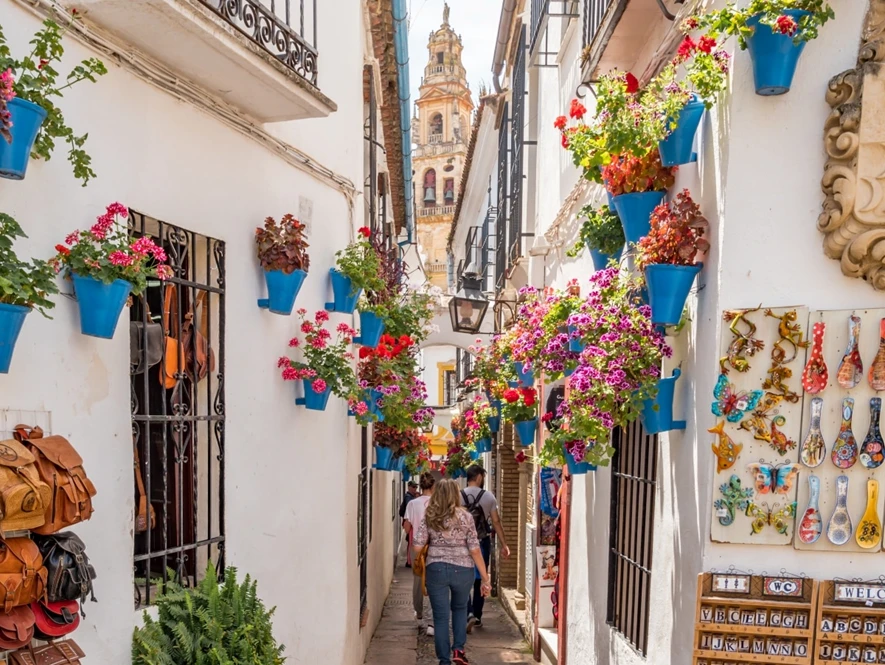
This place has several bars and restaurants, ideal for an authentic evening in Cordoba. Walking around the city you will notice that the city’s courtyards are all beautiful, mega-flowered, and very well cared for. During the spring the Patios Cordobeses festival takes place, which is when the city organizes the opening of the interior patios of the houses and their beautiful typical ceramics. I am telling you this because it is a great time to visit Cordoba, in fact, the south of Spain in general, spring is very cool.
Visit the Spanish Countryside
Seville
Now let’s go to Seville, it’s 45 minutes by train, 141 km separate Cordoba from Seville, which is the Andalusian capital and full of lively neighborhoods and Flamenco in every corner of the city, attracts us like a magnet, especially in the Triana neighborhood. Take note, the most popular places are:
- The Museo del Baile Flamenco.
- Casa de La Memoria.
Going to Andalusia and not seeing a Flamenco show, either in one of these two places or in others, is like not going to Andalusia at all.
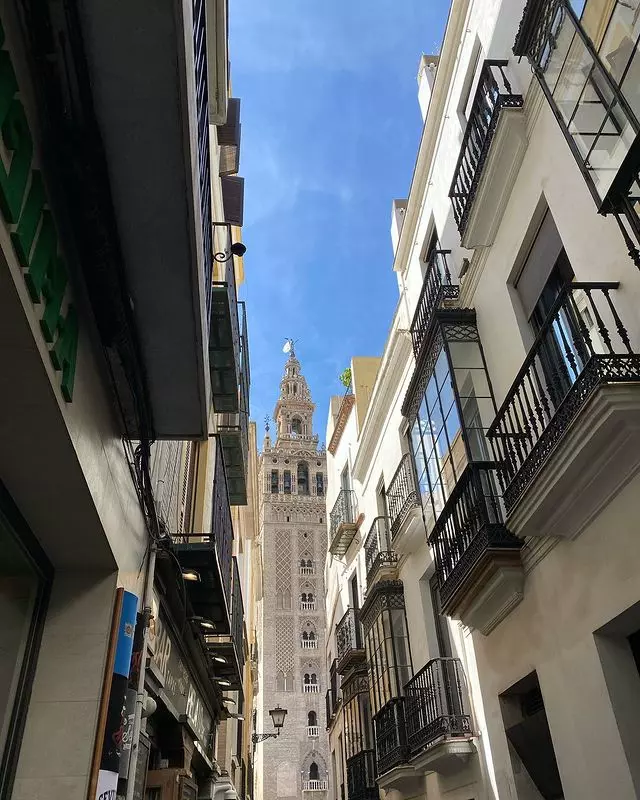
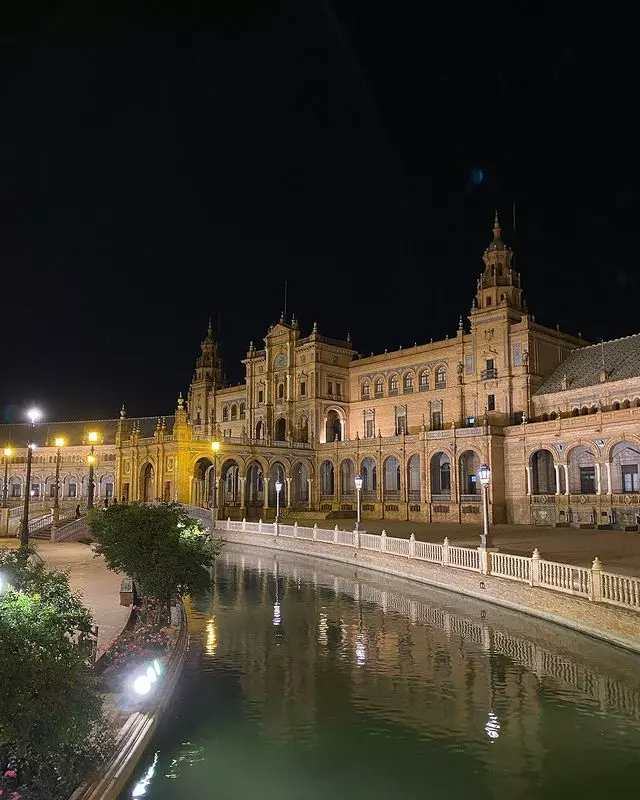
A bit of Flamenco
This Flamenco rhythm, which is actually a Gypsy lament, started without music or dance, and little by little the Spanish guitar, the carron, the castanets, and finally the tap and dance were added. And since the beginning of the 20th century it has translated this intense Spanish art that we see a lot in the movies.
Opera El Barbiere di Siviglia
Still talking about art, in the opera ‘El Barbiere di Siviglia’ we learn that the story of Figaro, who is a barber who does everything in his house, arranging marriages, there was confession, spreading rumor, until he decides to help a Count called Alma Viva to win the young Rosina, remember? But Alma Viva doesn’t want her to know that he is a Count. Is it fiction? Yes!
But the following, Seville, which, besides being the stage of famous operas like this one and others, the Carmen, which is fantastic, is a city that exudes art and culture, of great beauty and a place with a lot of personality, I assure you, mega charismatic, pulsating and is in constant evolution.
The Monuments of Seville
Seville has mega important monuments, it has the Alzácar Castle, the gigantic Seville Cathedral, one of the grandest projects of medieval history and it is all in gothic style, and there is the tomb of who? Christopher Columbus’, believe it or not. And there is even a beautiful 11th century viewpoint that ended up becoming a tower called the Giralda, which is a great symbol of Seville. All of these are very popular and there are long lines to visit these monuments, so you have to buy tickets in advance on the internet.
And there is even a ticket called Sevilla citypass which is a kind of ‘queue jump’, the fast track they call it. Besides all this, Seville is another city to go from bar to bar, from tapas to tapas trying the Spanish delicacies, present in the south of the country, walking along the banks of the Guadalquivir River, for example, is another delight. And Plaza de España, Sevilla’s Arrows, people, this is an impressive place, actually it is called ‘Metropol Parasol’, it is the largest wooden building in the world, inside it there is an unmissable market, the Mercado de la Encarnación, you will be surprised with how beautiful it is. There is also the Calle Peréz Galdós, the Palacio de las Dueñas, and all of this always accompanied by a lot of guitar playing, hand clapping and tap dancing. Three days might be enough to see everything in Seville, if you organize your tickets in advance to avoid hours of queuing.
El Rocio Festival
Near Seville, in a small village called El Rocio, which is only 80 km away on their Pentecost, which is exactly the fiftieth day after Easter Sunday, the El Rocio Festival takes place. Imagine the following, the narrow streets of a village where only 700 people live, normally deserted, are crowded with a million pilgrims from both Europe and Asia, who come for the religious celebration of the cult of the virgin Del Rocio. Casco Antiguo, the historic center is the best place to stay, especially the boutique hotel, those little candles there in the Santa Cruz neighborhood.
From Seville to Jerez de la Frontera
Continuing on our journey, first of all it is only a 90 km drive to Jerez de la Frontera, about an hour. And what does the Costa de la Luz have for us besides the best sands in Spain?
- First place is the wine Sherry né or Cherry as the English say, and it is from this region and therefore visiting a bodega is important.
- Sandeman or Tio Pepe, this is kind of a must, everybody does it and in this place I suggest you stay at the fabulous Barceló Montecastillo Golf, it is one of the most sensational hotels in the region and is right next to the Jerez race track, where Airton Senna won two championships.
- Flamenco and Andalusian Horses: The center of Jerez is a cute little town, Tapas bars, alleys, you also have the parade of the Real Escuela Andaluz de Bailados Ecuestres, how about it? An equestrian ballet performed by Andalusian horses. A Celebration of Culture Andalusia is also home to two of Spain’s most iconic cultural exports – flamenco and Andalusian horses. Catch a flamenco show in Seville or Jerez, or head to the Royal Andalusian School of Equestrian Art to watch these magnificent animals perform.
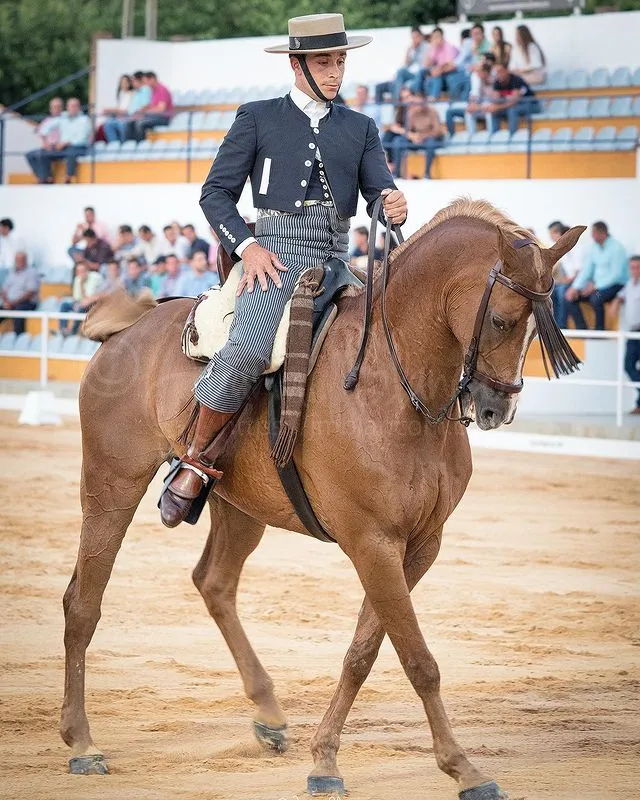
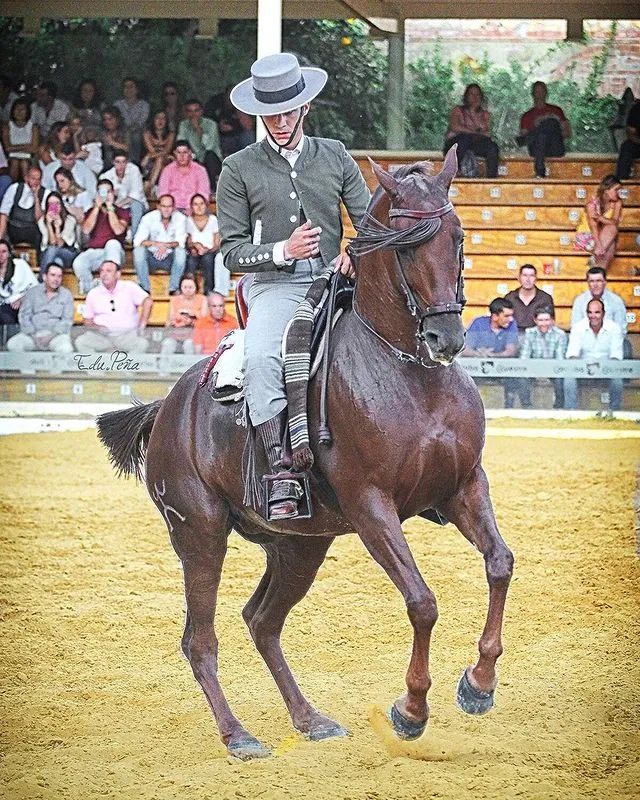
From Jerez de la Frontera to Cadiz
From Jerez de la Frontera we drive to Cadiz which is 24 km away, 30 minutes. Cadiz is near the Strait of Gibraltar and is one of the oldest settlements in Europe, founded by the Phoenicians in 1,100 BC. Cadiz is another amazing little town, besides the millenary history, mega nice and the unbelievable sea, not to mention the promenade that surrounds the entire city.
Things to do in Cadiz
- Plaza Mayor
- Ayuntamiento
- Cathedral
- Plaza de las Flores
- Various forts
- Bars all over the city
- Tapas and typical foods
Did you know that one of the 007 movies was shot in Cadiz, on the beautiful beach of La Caleta?
What is the ‘Siesta’?
Just don’t forget that in Spain everyone, or almost everyone, takes a ‘siesta’, ok? The ‘siesta’ is literally taking a nap after lunch. In Spain it is very common in the southern regions and Spaniards take a nap between 2pm and 5pm, or simply take a rest break.
Spain’s Oldest Carnival Festival
Cadiz is proud to have one of the oldest carnival parties in Spain. Since the 16th century, by the way, they even compete with the carnival of Venice, in Italy, that is, long before we started the carnival festivities here (Brazil), over there the guys already went out on floats, with lots of music, lots of partying, lots of dancing, lots of drinking. It is very likely that the Brazilian tradition of carnival came out of Cádiz. Generally the carnival parties in Cadiz are celebrated in the two weeks preceding Lent.
From Cadiz to Vejer de la Frontera
Leaving Cadiz to Vejer de la Frontera, 56 kilometers and 44 minutes by car. Think of a find, a jewel at the top of a hill 200 meters high, little houses that look like a jigsaw puzzle, all white, radiating light from southern Spain to all sides. This is Vejer, one of the highlights of the so-called Pueblos Blancos de Santa Luzia route, with its maze of narrow streets, flowery courtyards, and stairways everywhere. Vejer really charms the people who visit this place.
El Claustro, Restaurante de la Califa, Pastelaria Galvan, be sure to eat at these places.
Ronda
From Vejer de la Frontera to Ronda, 180 km, 2 hours by car. Another little town on the top of a mountain, at the top of El Tajo de Ronda, a deep gorge that separates the new town in the 15th century from the old town in the 9th century, surrounded by great walls, two ancient gates and a bridge, Puente Nuevo, a stone bridge that crosses a 100-meter high gorge, sounds like a movie, doesn’t it?
Ronda is one of the most spectacular towns in the province of Malaga, including the one that was featured in the soap opera ‘Deus Salve o Rei’ in Brazil.
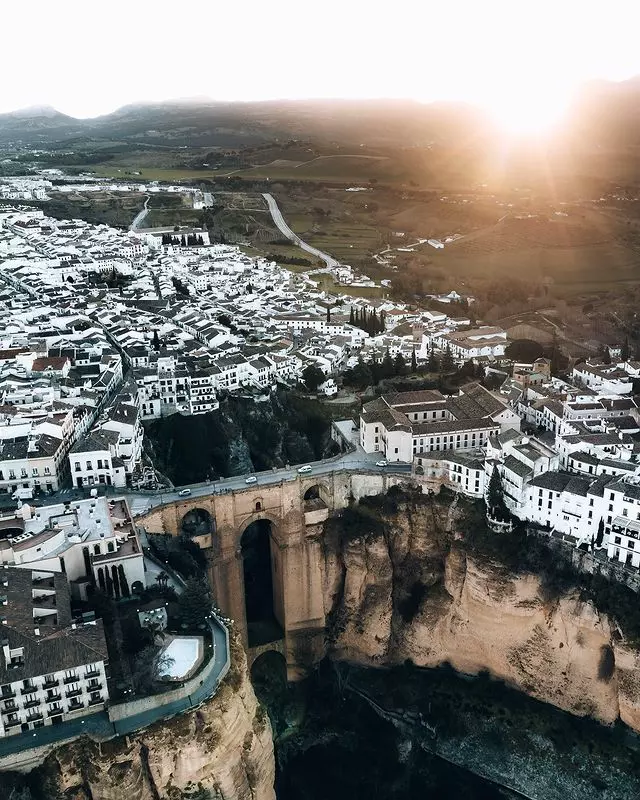
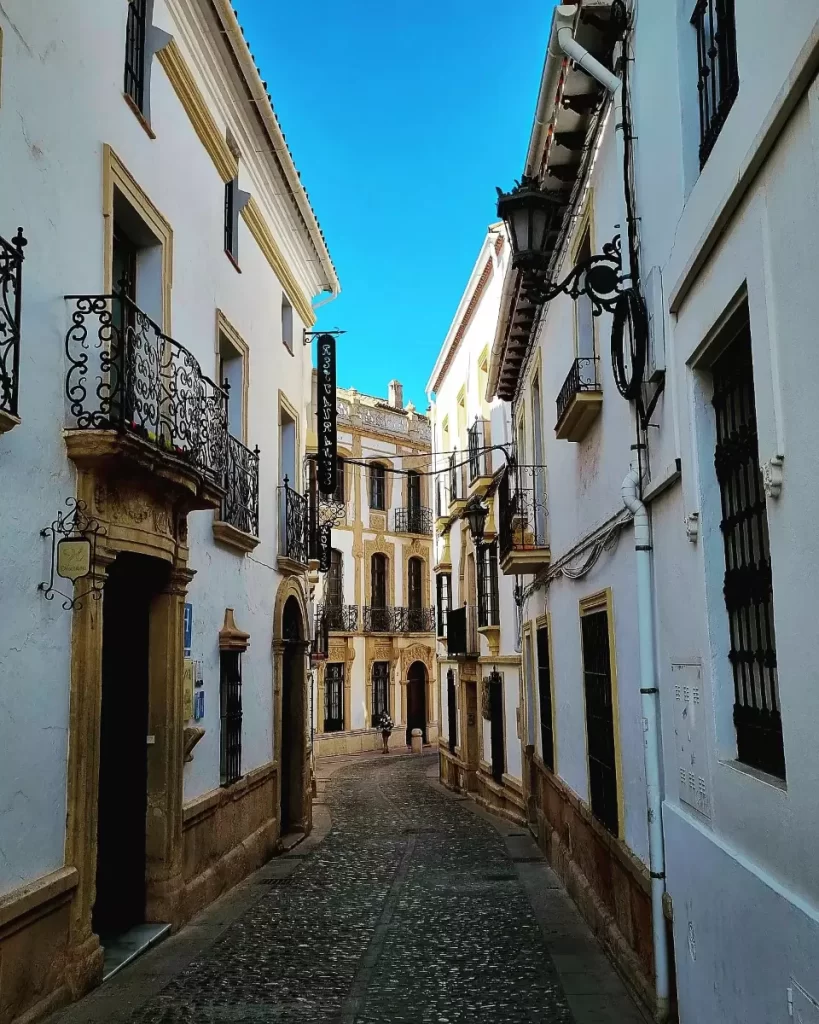
You can also visit the Plaza de Toros de las Ventas, the Lara Museum, the Mirador El Campillo, and of course the famous city center with its narrow alleys full of bars for you to tap and drink with friends. Ronda is unique!
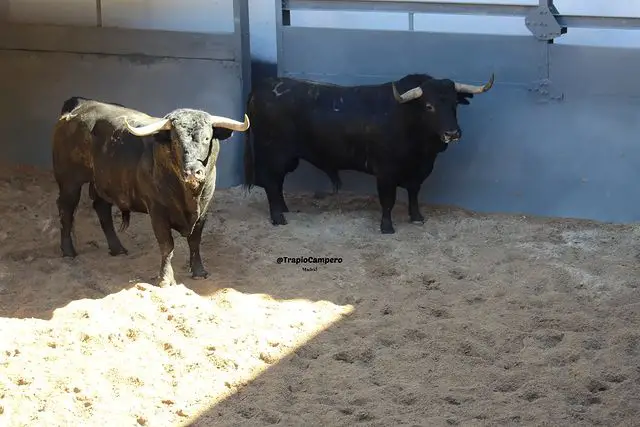
Marbella
Leaving the mountains towards the Mediterranean Sea, we will arrive in one hour, 60 km, in Marbella, the resort of the rich and famous of Spain and the world. Beautiful beaches on the Costa del Sol, yachts, restaurants, Michelin-starred restaurants, like Calima by Chef Dani Garcia. The historic center is very lively, you will feel like you are on a Greek island, with many white flowered houses and narrow cobblestone streets.
What to visit in Marbella?
- Avenida del Mar
- Playa Nueva Andalucía
- Cabopino
- Bajadilla Beach
- Paseo Maritimo de la Marbella
- Many bars and clubs to enjoy the night on the Golden Mile
Malaga
Continuing along the Mediterranean coastline, we leave Marbella in the direction of Málaga, and can either go straight along the Via Expressway or along the Avenida del Sol, stopping at the little towns along the shore, such as Fuengirola or Torremolinos that are worth a visit.
Pablo Picasso
Malaga is where Pablo Picasso was born, and it is one of the hottest cities in southern Spain. Think about the following: a beautiful beach, culture for all tastes, a beautiful historic center, a touch of Barcelona hovering in the air, because in Barcelona there is a beach called Barceloneta, and the main beach in Malaga is called Malagueta. And this is only one of the 40 km of Malaga coastline.
What to visit in Malaga?
In the new part, there is the impressive and gigantic Muele 1, an old port that has been futuristically renovated, and also the Montes de Málaga Natural Park, the Historic Botanical Gardens, the Plaza Mayor, open-air malls and the Atarazanas Market. If you like art, there is the Picasso Museum with an incredible collection of Pablo Picasso, the Carmen Thyssen Museum, the Automovilistico and Fashion Museum, the Tabacalera which is a museum with a permanent exhibition of Russian art, the first outside Russia. There is also the very modern Pompidou Center. Then there is the Castle of Gibralfaro with a beautiful view of the city, followed by the Alcazaba and ending your day in the Roman Amphitheater. How about all this in one day? There is also the Cathedral in the historic center, the Catedral de Málaga, don’t forget!
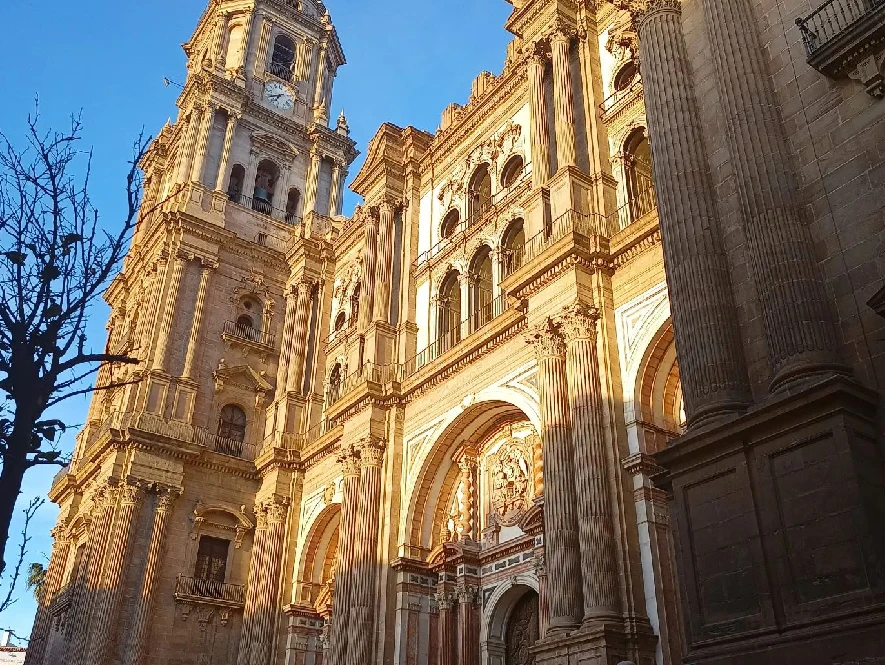
Discover the Magic of Granada
No visit to Andalusia would be complete without a trip to Granada, home to the Alhambra, a stunning palace and fortress that dates back to the 14th century. Marvel at the intricate carvings and colorful tiles that adorn the walls, and don’t forget to stroll through the charming neighborhood of Albaicin.
If you still have a few more days available for the trip, I suggest you continue to Granada. It is only 127 km that we cover in 1h40min, and the thing is, leaving this city for the end of the itinerary is to end the tasting through the South of Spain with the best of possible outcomes.
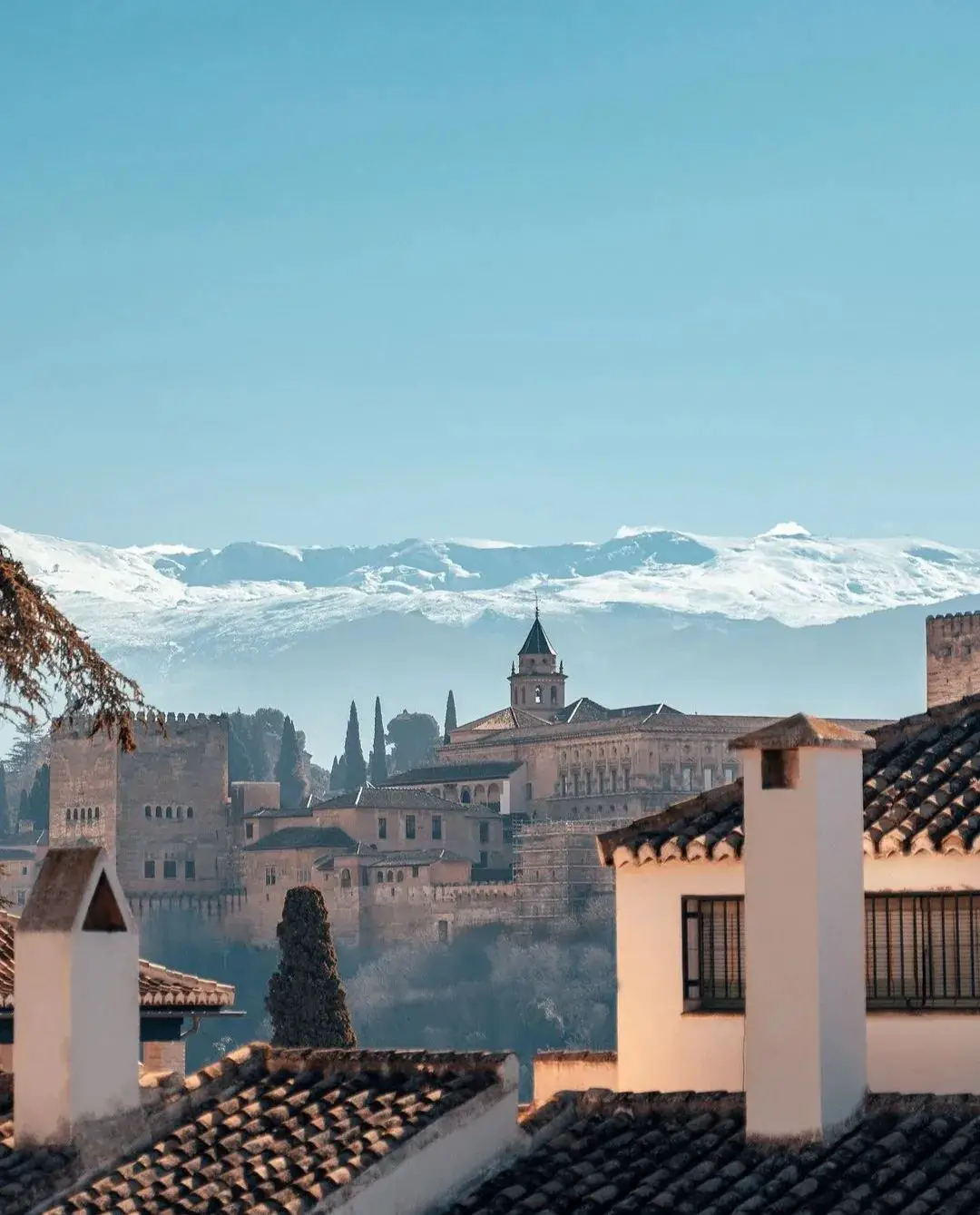
From the grandiose medieval architecture, especially the Alhambra, a complex of Moorish hilltop fortresses, which is to Spain what the Eiffel Tower is to France. And it really is stunning. Arabesque palaces, courtyards, serene, water mirrors, plus fountains and generalife orchards and gardens, and study shows us how it was the center of Muslim power for centuries. And it was right there that in 1492 the Catholic kings Isabel of Castile and Fernando of Aragon put an end to 781 years of Islamic rule in the Iberian peninsula.
But the tradition and history of the Moors still perpetuates in this city of reddish walls. As the Alhambra is one of the most visited monuments in the world, so you must buy admission in advance.
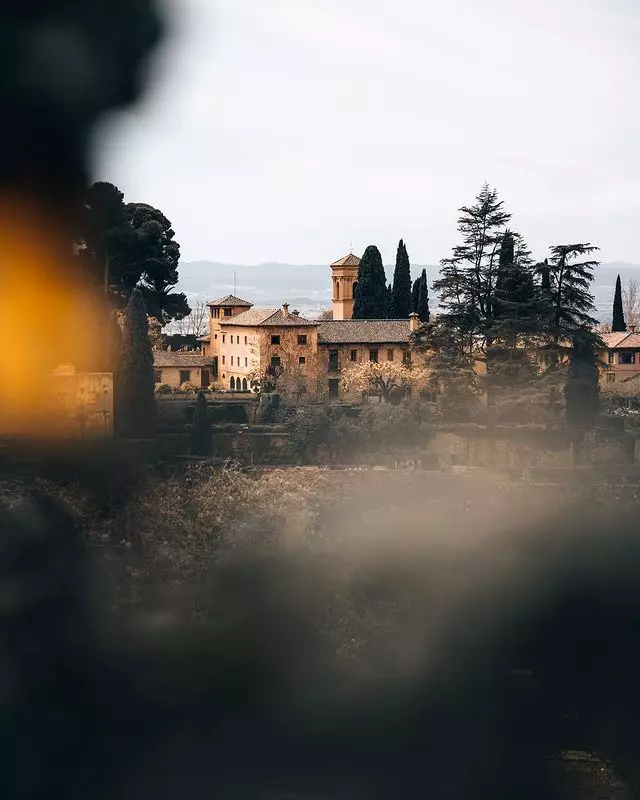
City Tour by Bus – C34
Another cool tour, you will leave the car at the hotel and go for a bus ride, actually you will spend an afternoon in a minibus called the C-34, you will do a mini City Tour through the Sacromonte and Albaicin neighborhoods, you will get to know these neighborhoods sitting down, the two most interesting neighborhoods in the city, do you know why? They are the two mountain tops. When you are in Albaicin, don’t miss the Calle de las Teterias, which means house of teas, with a delicious Arabic tea in the middle of that millenary city.
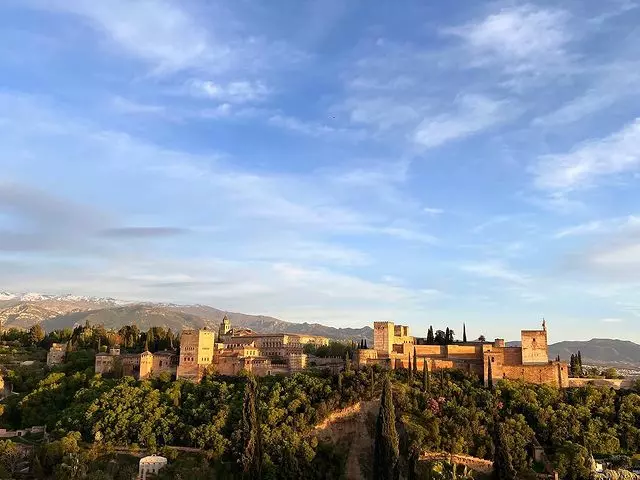
The Tapas of Granada
It’s time to tell you that Granada is the Tapas capital of Spain, and every drink you order there is always accompanied by a complimentary ‘tapa’, a little snack for you to eat.
El Bañuelo – Arabian Bathhouse
Muslims have a ritual of physical and spiritual cleansing that everyone should already know, right, normally Arab cities have several public places for these baths. In Granada there is El Bañuelo, which is considered the most conservative public bath in the peninsula and is like a legitimate Arab hammam.
We talked a lot about Flamenco, but don’t forget to check out the Flamenco of Granada, it is a little different, so much so that it is called Zambra Gitana, and every corner of the city you can find one of these clubs where there are Zambra Gitana dancers with musical shows.
It is incredible to arrive in this place, where it has countless monuments with so much cultural diversity developed by its people over the centuries and is the legacy of these civilizations that inhabited this region.
I hope you have enjoyed this content. Anything you need, talk to me here!




